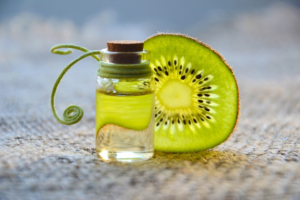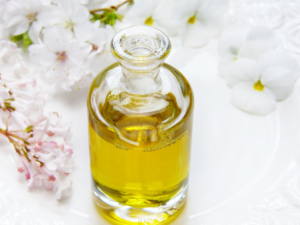Arabian perfumes, known for their alluring scents and rich history, have left an indelible mark on the world of fragrance. From ancient rituals to modern trends, the legacy of Arabian perfume history is a captivating journey through time and culture. In this comprehensive exploration, we immerse ourselves in the fragrant annals of Arabian perfumery.
Aromatic Beginnings
Ancient Origins: Arabian perfumery can trace its origins back to ancient civilizations such as Mesopotamia and Egypt. The use of the best Arabic perfumes for men and resins was an integral part of religious ceremonies, daily life, and trade.
Frankincense and Myrrh: These legendary resins, harvested from aromatic trees, held significant cultural and economic importance. They were gifted to kings and deities, symbolizing wealth and devotion.
Perfume in Islamic Traditions

The Influence of Islam: Perfume holds a special place in Islamic culture. The Prophet Muhammad encouraged personal grooming and the use of fragrance. As a result, perfume became an essential aspect of Islamic traditions.
Attar: The Perfume of the East: Attar, a traditional form of perfume, gained popularity during the Islamic Golden Age. It is made by distilling flowers and herbs into a base of sandalwood oil. Attars were often worn as a symbol of purity and spirituality.
Perfume Along the Spice Routes
Trade and Exchange: The Arabian Peninsula, strategically located at the crossroads of trade routes, became a hub for the exchange of spices, precious woods, and aromatic ingredients. These commodities were crucial in the creation of best selling women’s perfume UK.
Influence on European Perfumery: Arabian perfumes had a profound impact on European perfumery during the Middle Ages. Crusaders and traders brought back fragrant treasures, introducing Europeans to exotic scents.
The Perfume Renaissance
Luxurious Scents: The Ottoman Empire embraced perfumery, leading to the development of opulent fragrances. Perfume became a symbol of status and elegance in the royal courts of the East.
Western Influence: European colonization of parts of the Arabian Peninsula in the 19th and 20th centuries resulted in the blending of Arabian and Western perfume traditions. This fusion created unique fragrances that catered to diverse tastes.
Modern Arabian Perfumery
Contemporary Trends: Arabian perfumers have adapted to changing consumer preferences, creating a wide range of scents, from traditional attars to modern, international fragrances. These unisex perfume UK often feature notes like oud, rose, saffron, and amber.
Global Appeal: Arabian perfumery has gained global recognition, with consumers worldwide appreciating the intricate craftsmanship and captivating scents.
Sustainable Perfumery
Environmental Consciousness: Some Arabian perfumers are now focused on sustainability and ethical sourcing of ingredients. This includes efforts to protect endangered flora and support local communities.
Unisex Perfumes: The rise of unisex fragrances reflects a changing perspective on gender and scent.
The Artistry of Arabian Perfumery

Arabian perfumery is an art form that goes beyond the mere blending of scents; it embodies the essence of craftsmanship, culture, and creativity. In this extended exploration, we delve deeper into the intricate world of Arabian perfumery, uncovering the secrets of its artistry and the impact it has on the fragrance industry.
The Perfumer’s Palette
Oud: The Liquid Gold: Oud, also known as agarwood, is often referred to as “liquid gold.” It’s derived from the resinous heartwood of agarwood trees and is one of the most coveted and expensive fragrance ingredients in the world. Oud is central to many Arabian perfumes, adding depth, complexity, and a touch of the mystical.
Rose: The Queen of Flowers: Arabian perfumers have a deep appreciation for the rose, particularly the Taif rose from Saudi Arabia. This fragrant bloom is prized for its sweet, floral notes and is a staple in many perfumes, both traditional and modern.
Ambergris: The Ocean’s Treasure: Ambergris, a waxy substance produced by sperm whales, has been used in perfumery for centuries. Its unique scent-enhancing properties make it a valuable ingredient in creating long-lasting and harmonious fragrances.
The Craftsmanship of Blending
Attar-Making Tradition: Attar, the traditional concentrated perfume of the East, is crafted through a meticulous process. Flowers and herbs are steam distilled into a base of sandalwood oil, resulting in potent and highly aromatic fragrances.
Layered Scents: Arabian perfumers are known for their expertise in layering scents. They skillfully combine top, middle, and base notes to create fragrances that evolve and reveal new facets over time.
The Influence of Culture
Celebrations and Rituals: Perfume plays a vital role in Arabian culture and traditions. It is often applied before religious ceremonies, weddings, and other significant events. Perfume is a symbol of hospitality, and guests are often welcomed with scented oils.
Personal Expression: In the Arabian world, fragrance is a form of personal expression. Individuals select perfumes that resonate with their personalities and preferences, making it an intimate and cherished aspect of daily life.
Navigating Fragrance Families
Oriental Perfumes: Arabian perfumery is often associated with the Oriental fragrance family. These scents are characterized by warm, spicy, and resinous notes. Oud, saffron, and musk are common elements in Oriental perfumes.
Floral Elegance: Floral fragrances are also prevalent, with roses, jasmine, and orange blossoms taking center stage. These scents are often used to create romantic and feminine perfumes.
Woody and Earthy: Fragrances featuring woody and earthy notes, such as sandalwood and patchouli, provide a sense of grounding and connection to nature.
Modern Innovations
International Appeal: Arabian perfumers have gained recognition and acclaim on the global stage. Their ability to blend traditional ingredients with modern sensibilities has resulted in fragrances that resonate with diverse audiences.
Sustainable Practices: Many perfumers are now embracing sustainable practices, including ethical sourcing of ingredients and eco-friendly packaging. This commitment to sustainability aligns with the growing demand for responsible consumer choices.
The Future of Arabian Perfumes
As we journey through the aromatic history of Arabian perfumes, one thing becomes clear: the legacy is alive and evolving. Arabian perfumers continue to blend tradition with innovation, creating scents that resonate with a global audience.
Arabian perfume history is a testament to the enduring power of fragrance in shaping cultures and connecting generations. From ancient rituals to contemporary trends, the scents of Arabia continue to captivate and inspire.
Whether you seek the timeless elegance of attars or the modern allure of international perfumes, the world of Arabian fragrances invites you to explore its rich and fragrant heritage.
Author Bio:

Sayed Sayeedur Rahman is a pro digital marketer, SEO specialist, and content writer. He’s a certified professional with extensive professional experience working with USA and UK-based companies to grow their businesses. He’s the Co-Founder of TechLookBD and Digitize Online digital marketing agency.


